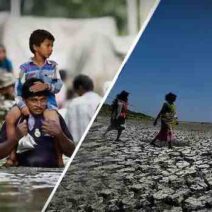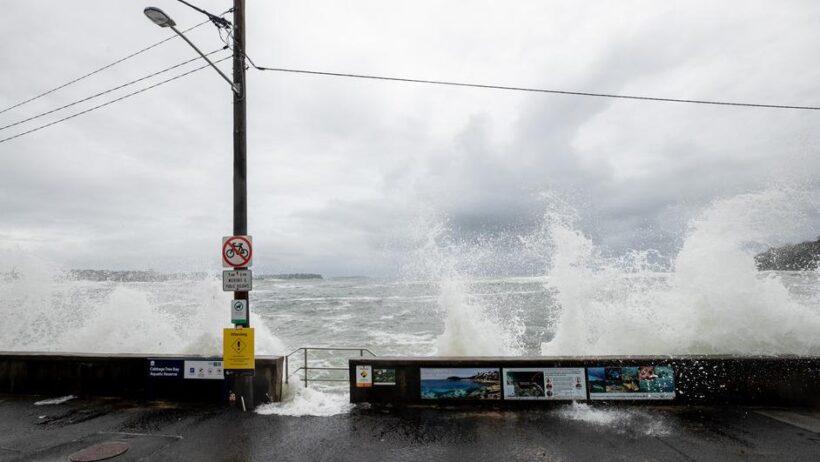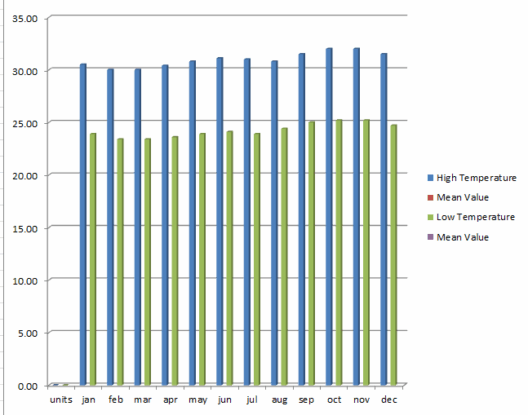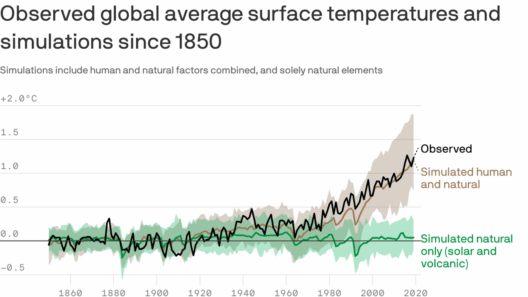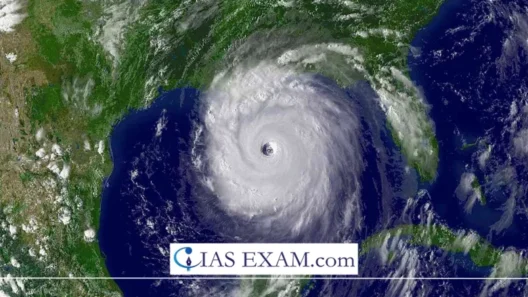Understanding the intricate dance between the world’s oceans and climate dynamics requires delving into the unseen movements of ocean currents and temperatures. These two vital phenomena play a monumental role in regulating Earth’s climate, significantly influencing global warming as we continue to grapple with its ramifications. To fully comprehend how ocean currents and temperatures affect global warming, one must first explore the underlying mechanisms that connect these elements to climate change.
Oceans are vast reservoirs of thermal energy, absorbing about 30% of the carbon dioxide emitted by human activities. As the climate warms, the oceans also warm, leading to a cascade of effects on global weather patterns and ecosystems. The movement of water within the oceans, driven by wind, temperature variations, and salinity differences, forms complex networks known as ocean currents. These currents, both surface and deep-water, act as conveyer belts, distributing heat and nutrients across the globe.
The primary players in ocean currents are the wind patterns, the Earth’s rotation, and the gravitational pull of the moon. The interaction among these factors creates major current systems, such as the Gulf Stream, which carries warm water from the tropics toward the North Atlantic, and the Antarctic Circumpolar Current, the world’s longest ocean current that encircles Antarctica. These currents not only regulate temperatures but also influence weather systems, affecting precipitation patterns and the water cycle.
When ocean temperatures rise, a phenomenon known as thermal expansion occurs. Warm water occupies more volume than cold water, but in tandem with rising sea levels, it poses significant threats to coastal communities. The thermal expansion of oceans exacerbates the effects of melting polar ice, compelling scientists to predict accelerated sea-level rise. On a broader scale, this distortion of coastal ecosystems alters the habitats of numerous marine and terrestrial species.
Moreover, rising ocean temperatures can derail established weather patterns. For instance, phenomena like El Niño and La Niña are directly linked to changes in sea surface temperatures in the Pacific Ocean. El Niño typically leads to warmer ocean temperatures and can trigger extreme weather events such as droughts, floods, and hurricanes in various regions worldwide. La Niña, in contrast, often brings cooler ocean conditions, influencing climate patterns in the opposite direction. Together, these oscillations illustrate how interconnected ocean temperatures and global weather are and how alterations in one can reverberate through the entire climate system.
As global warming progresses, the decline of ocean heat content is raising profound concerns about the intensity and frequency of extreme weather events. The underlying mechanics of this relationship hinge on the ability of warm water to retain moisture. In warmer conditions, the atmosphere can hold more water vapor, thus fueling more intense storms and precipitation events. The repercussions are multifaceted, leading to increased flooding, agricultural disruption, and more severe droughts in other regions. Such extreme fluctuations place a considerable strain on natural and human systems alike.
The implications of warmer oceans extend into the realm of marine biodiversity. Coral reefs, often referred to as the “canaries in the coal mine,” are particularly susceptible to changes in water temperature. Corals experience bleaching—a stress response triggered by elevated temperatures, which can lead to widespread coral mortality. As coral reefs decline, so too does the myriad of life that depends on them, resulting in diminished biodiversity and the collapse of local fisheries. This outcome can significantly impact food security for millions of people around the globe who rely on seafood as a vital protein source.
Deep ocean currents, or thermohaline circulation, play an equally critical role in influencing global climate. This system operates on a conveyor belt model, where cold, dense water sinks in polar regions and flows toward the equator, while warmer water rises to the surface. It is believed that these deep-sea currents could be altered by freshwater influx from melting ice sheets, disrupting their flow. Such changes can lead to drastic shifts in climate zones and affecting ecosystems on both land and sea.
Moreover, the ability of oceans to sequester carbon is intimately tied to ocean temperatures. Warmer waters absorb less carbon dioxide, limiting the oceans’ efficiency as a carbon sink. This limitation has dire consequences, further exacerbating the greenhouse gas concentrations in the atmosphere and enhancing global warming. In this regard, the oceans have transitioned from being a stabilizing force to a potential amplifier of climate change.
Looking ahead, understanding the connection between ocean behaviors and climate dynamics is essential for developing robust climate action strategies. Enhanced climate models integrating ocean currents and temperatures are needed to improve our predictive capabilities regarding future climate scenarios. The global community must prioritize investment in research and monitoring efforts to track ocean health and gather insights into their response to climate change. Protecting marine ecosystems and mitigating further disruption of ocean currents are critical in combating global warming.
In the face of a changing climate, an appreciation of the oceans’ pivotal role is paramount. The interconnectedness of ocean currents and global temperatures should reignite our sense of urgency toward implementing sustainable practices. The survival of the world’s oceans—along with their inhabitants—depends on our collective response to the challenges posed by climate change. Hence, a shift in perspective is not only warranted but essential for fostering an environmentally resilient future. Understanding this intricate tapestry can empower individuals, communities, and nations to embark on a path towards restoration and sustainability, galvanizing a global movement to protect our invaluable oceans and, by extension, our planet.


